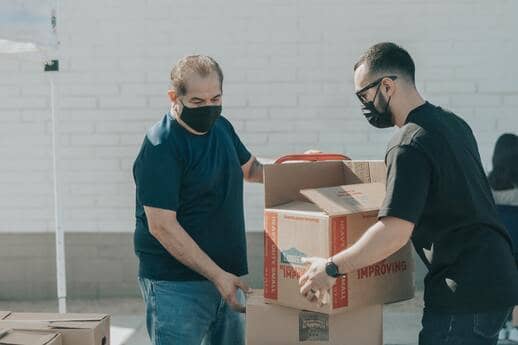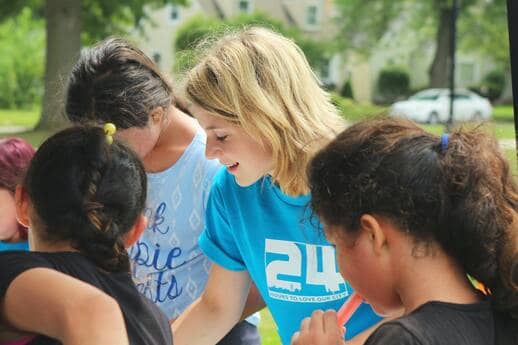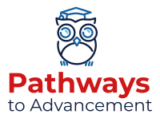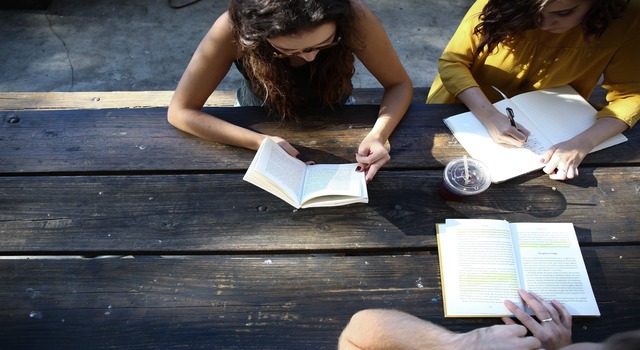Service-learning courses are becoming increasingly common in both K-12 and in colleges and universities throughout the United States. These courses combine community service work with a more traditional, structured academic course load. There is usually a partnership with a local volunteer organization. In this learning model, students have the opportunity to craft their own civic identity and navigate a social environment of their own. This model brings together community engagement and classroom instruction through a faculty-guided, student-driven approach to service.
What is Service Learning?
Service learning is a form of experiential education that integrates meaningful service with formal instruction and reflection to enrich both the student and community. Service learning is a method of teaching that combines service activities with classroom instruction. This can take place in either a K-12 school setting or a college setting. The goal of service-learning programs is to provide students with opportunities for personal growth and development through active participation in community service.
Service learning can be used to teach any subject. However, it’s most often used as an educational strategy for teaching social studies, civics, economics, and other disciplines in K-12 schools. In higher education settings, service learning works in tandem with courses such as sociology or psychology, or other social science majors.
What Are The Benefits of Service Learning In College?
Below we’ll discuss the three most important benefits of participating in service learning while you’re enrolled in college.
Service Learning Can Help You Develop Important Skills
There are many benefits of incorporating this type of learning into a college course load. One of them is the opportunity to develop important and valuable skills. A study was done called “Taking the Learning from Service-Learning into the Post-college World” by Kathy Shepherd Stolley et al. This study surveyed alumni of one college’s service-learning programs. The study found that two-thirds of respondents reported improved interpersonal skills, improved communication skills, and improved leadership skills. One-half of the respondents also reported improved teamwork skills.
This people-focused learning is important in an increasingly global and collaborative job market. However, it’s not always emphasized in more technical fields like computer science, pre-medical, or STEM programs. Service learning is one way to fill those gaps. A study was done that examined the value addition of this type of learning model. A group of researchers suggested that this type of learning may be important in making up for a lack of problem-solving and ethical training for many college majors.
Service learning can be an excellent way for students to develop a more well-rounded skill set while still in college.

Service Learning Gives You Real-World Experience
Through service learning, many college students get their first glimpse of real-world responsibilities. They’re also able to see the internal operations of community organizations and nonprofits.
While students in more technical majors may benefit from the different skills service-learning introduces them to, students in social science fields, such as counseling, have the opportunity to see the theories they study in the classroom in action. This in turn may give them useful insights and enhance their ability to think critically about their own disciplines.
Regardless of major, any student can benefit from the experience of responsibility in a service-learning setting. Having tasks that need to be completed and reporting to a volunteer supervisor is much more similar to life in the workforce than classroom experiences are. This can both help students prepare themselves for their careers and may also help them to determine what career field they wish to pursue.
Service Learning Helps You Make an Impact
There seems to be an ever-present feeling that college students need to optimize every aspect of their lives. They look for experiences that might help them find and secure work after graduation. Therefore, it’s easy to lose sight of the fact that service-leaning is ultimately about serving others. The experience of doing meaningful work that improves the lives of others can be one of the most important parts of this type of program.
Many students who take part in this kind of learning environment find themselves drawn to careers where they can provide assistance to others later on in life. Half of the alumni in Stolley’s study went on to work in helping professions such as social work and teaching. Service learning can be a wonderful way for students to learn more about themselves professionally. It can help them better understand what type of work they may want to do.
Working with community organizations while in college can also be an empowering experience. When exposed to the inner workings of these groups, students can take this knowledge and apply it later in life. Service learning can help you let go of the idea that making change is difficult or impossible for ordinary people.

What Are The Three Components of Service Learning?
1. Community service: This is the aspect of service learning where students actively participate in a service project or activity that addresses a community need. This can include things like working at a soup kitchen, volunteering at a local school or hospital, or participating in a neighborhood clean-up.
2. Reflection: This component of service learning allows students to think critically about their service experience and consider how it relates to their own personal growth and the course material they are learning in school. Reflection can take many forms, such as writing in a journal, participating in class discussions, or creating a presentation to share with classmates.
3. Integration: This component of service learning bridges the gap between the community service experience and the classroom by connecting the service to the academic content being studied. This can be achieved through class discussions, research projects, or other activities that help students understand the context of their service learning experience and how it relates to larger issues and concepts being studied in the class.
Together, these three components (Community Service, Reflection, and Integration) work to create a deeper and more meaningful learning experience for students by connecting their classroom studies with real-world problems and issues.
Service Learning Projects: Real-World Examples
Here are a few examples of service learning projects that students have been involved in:
- Tutoring and Mentoring: Students work with young kids in a local school or community organization, providing one-on-one or small-group instruction in basic subjects such as math, reading, or science.
- Environmental Conservation: Students may work on projects related to conservation, such as removing invasive plant species, planting native trees and shrubs, or monitoring water quality in local streams. This would be a great project for anyone studying environmental science or marine biology.
- Community Clean-Up: Students may take on projects such as cleaning up litter and debris from local parks or building gardens in public spaces.
- Food Security Projects: Students may work with local food banks or soup kitchens, or help develop and manage community gardens or farmers’ markets.
- Support for homeless or low-income populations: Students may work at shelters or assist with building or renovating affordable housing units.
- Health and Wellness: Students may work in clinics, hospitals, or community health centers, or lead health education and awareness campaigns in their local community.
- Education and Awareness: Students may be involved in developing educational materials, holding workshops or seminars to raise awareness on diverse issues, such as poverty, race and inequality, and advocating for policies that promote social justice.
Keep in mind that these are just a few examples of service learning projects that college students can be involved in. The key is that these projects allow students to actively engage in addressing real-world problems and issues while also developing new skills and gaining a deeper understanding of the subject and courses they are taking in college.
Key Takeaway
The university experience is often criticized for taking place in a “college bubble”, where you’re isolated from the pressures of the real world. Service learning bursts that bubble by allowing students to come into direct contact with the community in which their college resides. While participating in this learning model, students have the opportunity to develop and improve skills and get much needed job experience before graduation. Understanding the importance of participation in the broader social world is an integral part of the development of college students into engaged, thoughtful adults. And that is exactly what service learning provides for college students.



